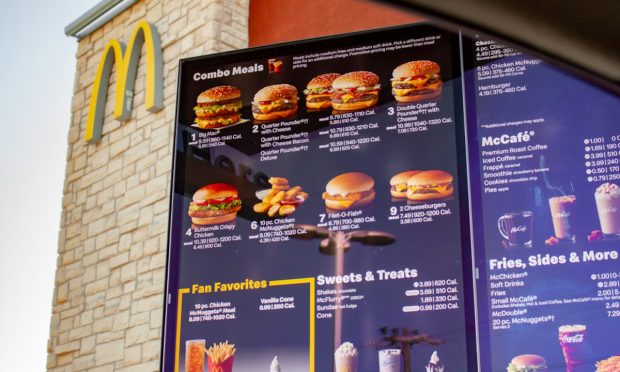Restaurants Move Toward More Automated, Personalized Drive-Thrus

In the race to create the drive-thru of the future, McDonald’s just pulled ahead. The company announced on Wednesday (Oct. 27) that it is partnering with IBM to assist in developing and implementing automated order-taking (AOT) capabilities. Through the deal, IBM is acquiring the restaurant chain’s McD Tech Labs, which was formed from McDonald’s 2019 acquisition of conversational commerce company Apprente.
Read more: McDonald’s Teams With IBM to Super-Size Drive-Thru Lane Tech
While AOT technology has a number of applications, including enabling voice ordering through smart devices at home, one of the most pressing use cases for restaurants is automating the drive-thru. Back in June, McDonald’s began trying out automated order-taking technologies at 10 drive-thru restaurants in Chicago.
See also: Restaurants Race to Offer Most Efficient AI Drive-Thru Experience
If the chain can implement this technology in a way that is consistently accurate and delivers a simple, intuitive experience, McDonald’s can seize on the popularity of the drive-thru channel while circumventing the labor costs, as staffing challenges persist. Additionally, if the technology reaches a point where it can take orders more quickly than a human, wait times could be reduced, further boosting the popularity of the channel.
Since the initial uptick of drive-thru sales in the first half of 2020, the channel has increasingly become a priority for major quick-service restaurant (QSR) brands. In August, for instance, Taco Bell announced its Defy restaurant design, a four-lane, mobile-integrated drive-thru where orders are sent down from the kitchen through a food elevator. That move is part of the chain’s ongoing push to find restaurant formats that reduce costs and optimize labor — earlier in the year, Taco Bell debuted its kiosk-filled, digital-only store in Times Square.
“So much has changed in even the past two years, [and] it’s exciting to think of what can continue to evolve,” Taco Bell President and Chief Operating Officer Mike Grams told PYMNTS in an interview. “As we look ahead, we’re excited by the challenge to reduce our restaurant footprint in concepts of the future, to better cater to our customers’ evolving needs.”
You may also like: Taco Bell Restaurants Will Keep Getting Smaller, Says COO
The concept of drive-thru lanes dedicated to mobile ordering, a model popularized by Chipotle, is one of the key ways that restaurants are incorporating digital technologies into their drive-thrus, but it is certainly not the only integration. One challenge for restaurants looking to both maximize their drive-thru sales and optimize their messaging through loyalty program data is that it can be difficult to incorporate the rewards program into the drive-thru journey.
Burger King has been pioneering in its efforts to join the two. The chain has been testing a program that uses Bluetooth to identify Royal Perks loyalty program members. When these members drive by, Burger King displays items they have previously ordered on its digital menu board, personalizing the experience.
On a call with analysts on Monday (Oct. 25), Jose Cil, CEO of the restaurant’s parent company Restaurant Brands International, shared that the company is working to implement a similar strategy at Tim Hortons’ drive-thrus. Additionally, he noted that more than half of Burger King drive-thrus are now “equipped with outdoor digital menu boards.” By the end of the year, that is expected to increase to 75%, and by midway through 2022, it should be close to 100%.
Related news: Burger King’s Paper Coupon Problem Pits 20% of Loyal Customers Against Digitization Push
“With nearly 80% of Burger King sales coming from drive-thrus, we believe this important initiative will drive significant long-term benefits for the overall business,” Cil said.
